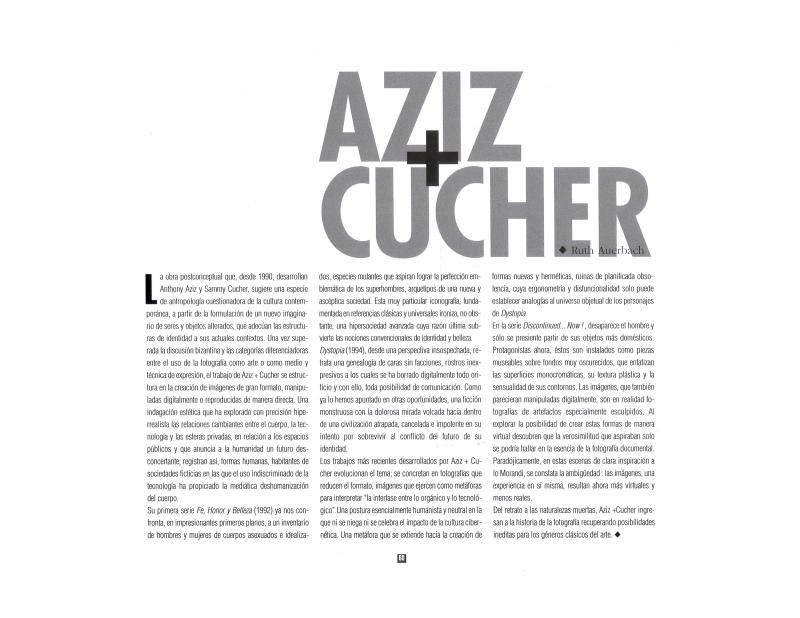In her essay “El rostro perfecto para un lugar difícil,” the Venezuelan art curator María Luz Cárdenas (b. 1952) discusses the ideas expressed in Dystopia, the work by Sammy Cucher (b. 1958), and describes how those ideas are transferred to a photographic image. The process of digital “doctoring” that alters reality, eliminating any trace of mankind’s existence, is influenced by the disappearance of the “I”—a concept that these ten photographs clearly reflect. Cárdenas notes that the Venezuelan artist’s work, jointly produced by Cucher and the North American Anthony Aziz (b. 1961), is a response to a basic need to rethink man’s position in today’s society.
Cárdenas provides some background by referring to Cucher’s previous work, showing that Dystopia is the latest variation on a theme that he has been working on for some time. This review, written in easily accessible terms, helps the reader to understand works of this nature, which are well-known in international circles.
Dystopia was exhibited at the Biennale di Venezia in 1995, where the Italian-born Venezuelan photographer Paolo Gasparini (b. 1937) also showed his work. The catalogue for this event consisted of two books, both of which had introductory essays by the Venezuelan researcher Tahía Rivero.
For additional information, see the 1997 article by Ruth Auerbach about the works Dystopia (1994), Fe, Honor y Belleza (1992), and Discontinued… Now! (1996) entitled “Aziz Cucher” [doc. no. 1164422].

